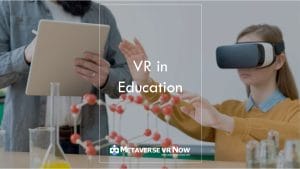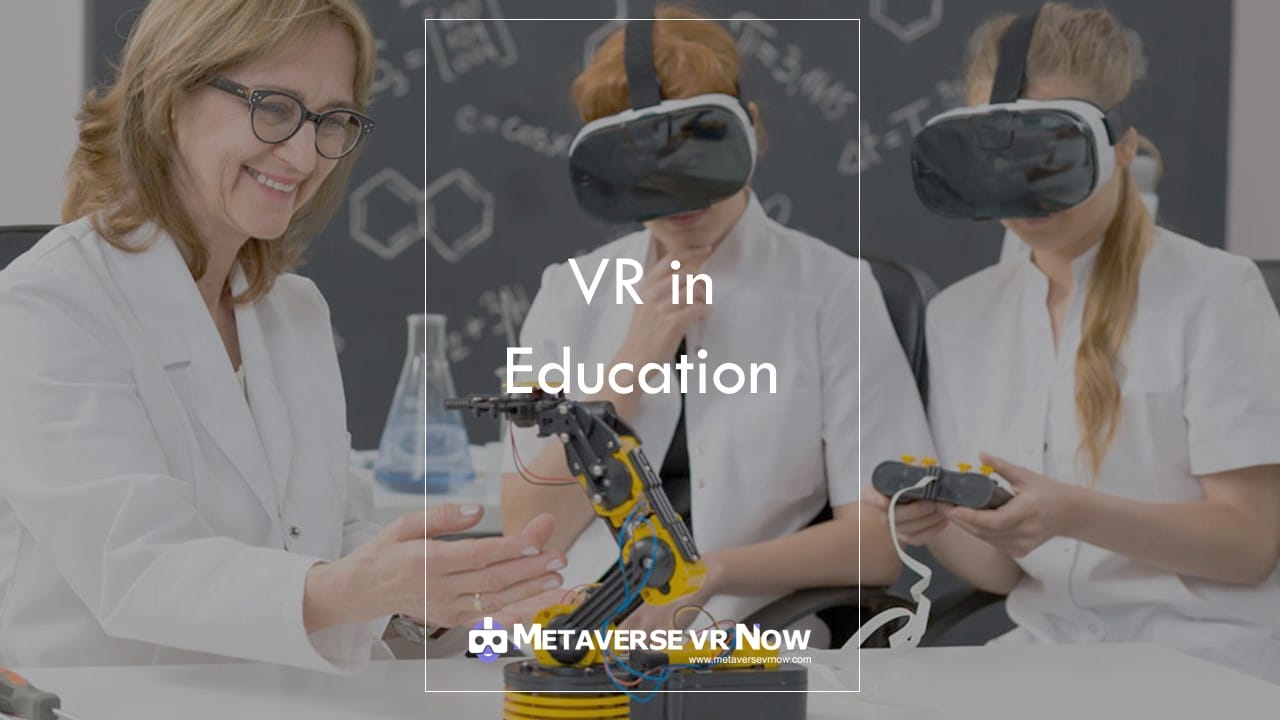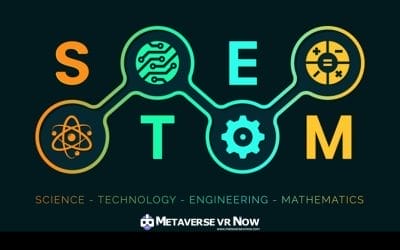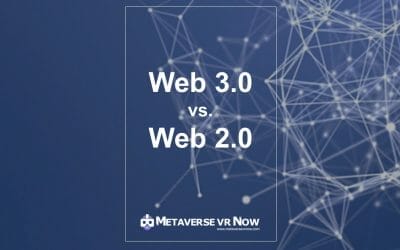Why is virtual reality the future of education? Learn more about practical applications of virtual reality in education and its benefits for students, teachers, and parents. How can students boost their knowledge using virtual reality technology, and how are teachers using VR in the classroom?
We examine the facts.
What is virtual reality?
Virtual reality is an immersive experience using a computer or electronic device to generate realistic images, sounds, and other sensations that replicate a real environment or create an imaginary one.
VR can be used in education to help students learn about subjects such as history, science, and math. For example, students can visit ancient Greece or the surface of Mars using VR technology.
How VR is changing education
As VR technology evolves, it is becoming more accessible and affordable for use in everyday life, including in education. VR can be used to create immersive learning experiences that allow students to explore new worlds, experiment with new ideas, and learn in ways that were not possible before.
Some schools have already begun to incorporate VR into their curriculum. For example, students at the University of Southern California are able to take virtual field trips to different parts of the world, and students at Dartmouth College can use VR to experience historical events such as the sinking of the Titanic.
The potential for VR in education is enormous. It has the potential to revolutionize how we learn, making learning more fun and engaging while also helping us to understand complex concepts better. As VR becomes more popular and widespread, even more schools will likely begin to incorporate it into their curriculums.
How VR is used currently in education
Virtual Reality has many applications in various fields, one of which is education. There are many ways that VR changes the landscape of a classroom setting.
One way is to have students use VR to learn about different places around the world. They can visit ancient ruins, go on safaris, or explore other cultures. This type of virtual field trip can help students learn more about the world and different cultures. VR can teach science and math concepts. Students can experiment with physics concepts in a virtual lab or explore mathematical concepts in a virtual world.
VR can help students with disabilities learn. Students who are deaf or blind can use VR to see and hear the world around them. They can also communicate with other people in VR chat rooms.
How Virtual Reality is Making Education Fun
Virtual Reality is making its way into the education system. Some schools are using it to teach students fun and interactive ways. For example, students can put on a virtual reality headset and visit another place, like ancient Rome or the bottom of the ocean. They can learn about history, science, and other subjects more immersive than ever before. Some people worry that virtual reality will replace teachers.
However, many experts believe that VR will actually help to improve education by making it more interesting and engaging for students. It can also help teachers to understand their students’ needs and interests better. VR can provide extra support for students who need it.
Overall, virtual reality is proving to be an effective tool for learning. It is helping to make education more fun and engaging for students of all ages.
Virtual Reality is Helping Students Learn Faster
Virtual Reality is helping students learn faster in the early days of virtual reality. It was often synonymous with gaming and entertainment purposes.
However, as the technology has evolved, so too has its potential application in other areas such as education. Virtual reality is now helping students learn faster and more effectively. This is especially true in subjects that are difficult to understand or that involve a lot of hands-on practice, such as science and math.
One of the benefits of virtual reality in education is that it can help students overcome their fear of failure. If a student makes a mistake in a traditional classroom setting, everyone can see it. With virtual reality, students can make mistakes without feeling embarrassed or anxious. This allows them to experiment and learn new things more freely.
Additionally, VR can help students understand complex concepts more easily.
Advantages of VR in education
There are many advantages to using virtual reality in education.
First, VR allows students to explore places they would never be able to visit in person, like the bottom of the ocean or the surface of Mars. This can help students learn about new places and cultures without ever leaving the classroom.
Second, VR can help students with learning disabilities better understand complex concepts. For example, students with dyslexia can read ancient texts in VR classrooms that are synonymous with ancient Greece or Rome.
Third, VR can make learning more fun and engaging for students. This is especially important for subjects that students find boring or difficult, like math or science.
Finally, VR can help teachers assess student understanding by providing feedback on how well students are following along with the lesson.
Disadvantages of virtual reality in education
Virtual reality in education is still a relatively new technology, and there are a number of disadvantages to using it in the classroom.
First, VR can be expensive and difficult to set up. Most headsets are not yet widely available, and even those that are tend to be quite expensive. In addition, most schools lack the necessary hardware and software to support VR learning activities.
Second, VR can be isolating and distracting. Some students may find it challenging to focus on their work when they are wearing a headset. Furthermore, VR can often be quite immersive and distracting, which may lead students to become engrossed in the virtual world rather than the real one.
Third, VR can be dangerous. Although rare, there have been cases where students have injured themselves while using VR headsets.
Limitations of virtual reality in education
Virtual reality in education is the future of learning. It provides an immersive environment that can apply to the individual student’s learning requirements. However, there are several limitations to virtual reality in education.
First, setting up and maintaining a virtual reality lab can be expensive.
Second, many students are not comfortable with using virtual reality technology.
Finally, virtual reality can be isolating and may not promote social interaction among students.
How to implement virtual reality in education
Virtual Reality (VR) is an immersive experience that can transport people to different places and worlds. It has the ability to create new opportunities for education by providing a new way to learn. VR can be used in many different ways in education, from elementary school to college.
One way to use virtual reality in education is by having students learn in a virtual world. This can be done by creating VR learning modules that allow students to explore different topics. For example, if a student is studying history, they could visit ancient Rome using VR. Or, if a student is learning about biology, they could go on a virtual safari and learn about different animal species. VR can teach practical skills to medical students, construction engineering, and technology. For example, medical students can use VR to practice surgeries, or nurses can use VR to learn how to give injections.
The future of virtual reality in education
Virtual Reality (VR) technology is growing more popular in education with each year that passes. One of the primary benefits of VR technology is that it can help students learn in a more immersive and engaging manner. There are many advantages to using VR in the classroom, which is why it will become even more widespread in the years to come.
In VR, students can explore virtual worlds and experience different scenarios that wouldn’t be possible in real life. This can make learning more exciting and fun, which can result in better retention rates. VR can also be helpful for students with disabilities. For example, visually impaired students can benefit from using VR headsets that provide audio descriptions of what they are seeing. Additionally, students with autism can often benefit from using VR simulations that help them understand social situations better.
Conclusion: What does the future hold for virtual reality in education?
Virtual Reality technology is growing rapidly. Many believe that it will soon become a staple in education. There are many potential applications for virtual reality in education.
Some of these include allowing students to explore virtual worlds, providing immersive learning experiences, and helping instructors create engaging lessons.
There are many factors to consider when determining whether or not VR will be successful in education. Cost is one consideration. Currently, VR headsets are expensive, and many schools may not have the funds to invest in this technology.
Additionally, educators must train on how to use VR effectively in the classroom. Despite these challenges, there is a lot of potential for VR in education. If implemented correctly, VR can provide students with new and innovative ways to learn.

Sources
- Massachusetts Institute of Technology – The MIT Center for Advanced Virtuality
- Yale University – A safe space: Medical researchers use virtual reality to reach youth
- Harvard University – Learning Empathy Through Virtual Reality: A Mixed Methods Study
- Harvard Innovation Labs – AR/VR Studio
- UPCEA – VR, AR, and AI will Transform Universities. Here’s How.
- VReddo – Emphasizing the Benefits of Virtual Reality in Universities and its Students
- DELL Technologies – The State of (Virtual) Reality in College
- Engineering Institute of Technology EIT – Is Virtual Reality the Future of Education?
- Information Technology & Innovation Foundation – The Promise of Immersive Learning: Augmented and Virtual Reality’s Potential in Education
- LSU How Virtual Reality Is Changing Education
- Adobe – How VR In Education Will Change How We Learn And Teach








